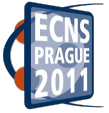HK8 - SANS and Neutron Optics Diffractometers
Neutron beam at the channel HK8 hosts two experimental facilities: High-resoiution SANS Diffractometer (MAUD) and Neutron Optics Diffractmeter (NOD). The two instruments use monochromatic beams selected by bent Si 111 and Si 220 monochromators situated in common shielding block. Such a construction is possible thanks to the very low absorption of silicon for thermal neutrons so that the first monochromator leaves the wavlength band for the second one almost intact. The common primary beam is shaped by a newly installed (in 2009) collimator with dimensions optimized for the beam size and divergence employed by the SANS instrument. It contains 10 cm thick sapphire filter and a sequence of B4C and Pb inserts in order to minimize gamma and neutron background and to suppress contamination of the beam by high-order Bragg reflections. The monochromators shielding is composed from inner Pb container and outer 40 cm thick wall made of concrete filled with B4C powder. The secondary collimators are equipped with horizontally and vertically adjustable slits, which permit fine tuning of required beam size delivered to the sample area.




